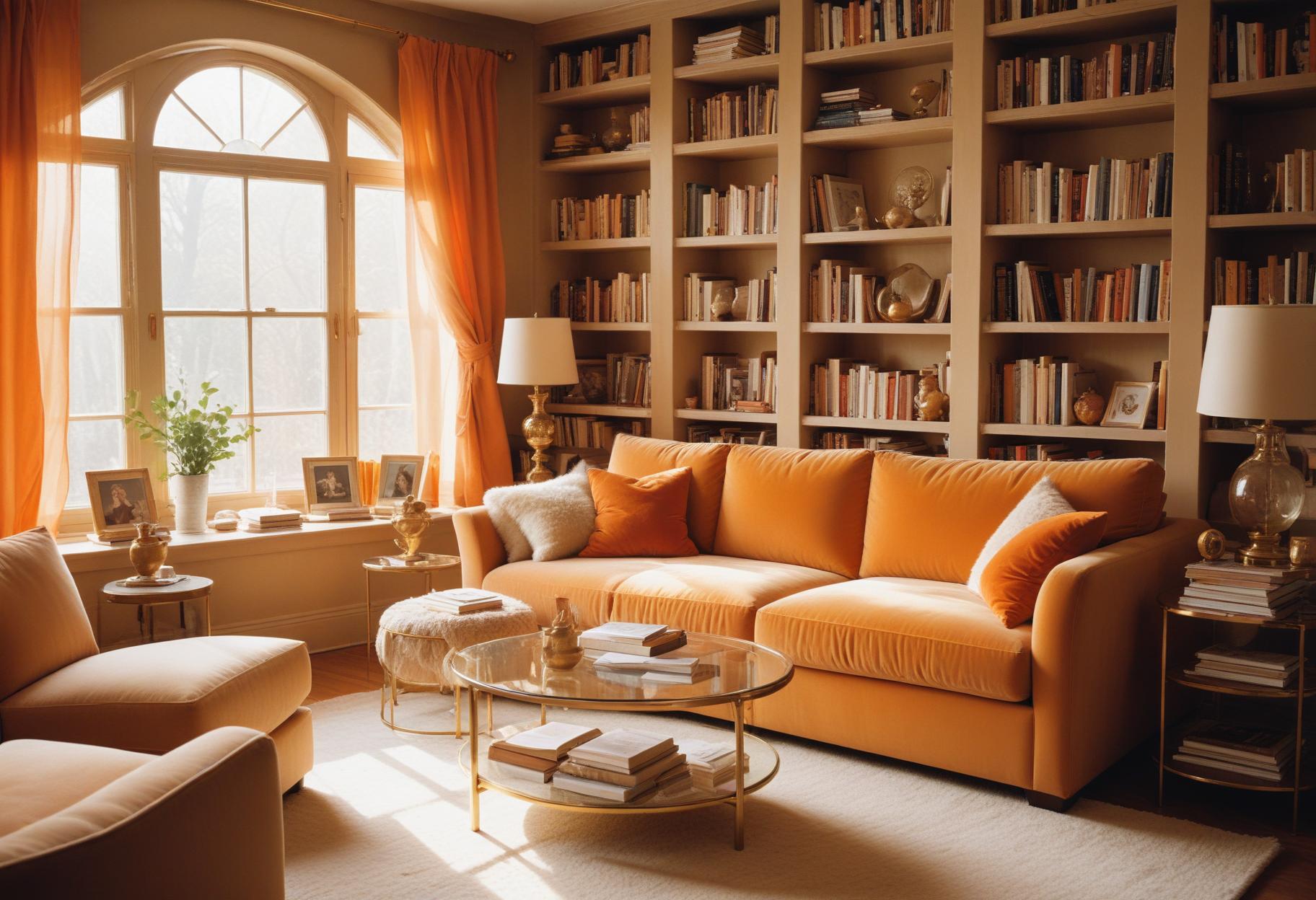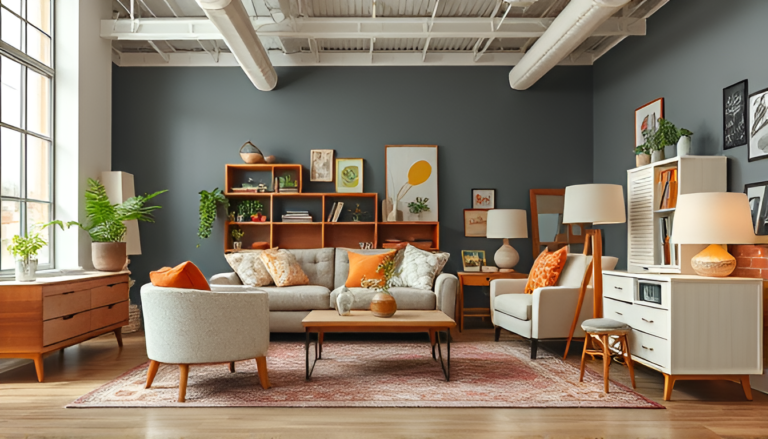Furniture shopping can be both an exciting adventure and a daunting task. Whether you’re moving into a new place or simply revamping your current space, the choices are endless. From cozy sofas to chic dining tables, every piece of furniture has the potential to transform your home into a sanctuary that reflects your unique style.
But before you dive headfirst into this world of decor and design, it’s crucial to navigate it wisely. Many shoppers fall prey to common pitfalls that can lead to regret and dissatisfaction down the line. Understanding these furniture shopping mistakes is essential for making informed decisions that enhance both comfort and aesthetics in your living spaces.
Ready to shop smarter? Let’s explore some key missteps you should avoid on your quest for perfect furnishings!
The Importance of Furniture Shopping
Furniture shopping is more than just picking out a few pieces to fill your home. It’s about creating a space that reflects who you are and how you live.
The right furniture transforms a house into a home. Each piece contributes to the overall vibe, whether it’s cozy, modern, or eclectic. Choosing furniture thoughtfully can enhance comfort and functionality in everyday life.
Moreover, investing time in this process impacts your mental well-being. A well-furnished environment fosters relaxation and productivity alike.
Quality furniture often leads to long-term savings by reducing the need for frequent replacements. Prioritizing durability over trends can be beneficial for both your wallet and style longevity.
Taking the time to shop wisely pays off in ways beyond aesthetics; it creates an inviting atmosphere that welcomes family and friends alike.
Common Mistakes to Avoid
When diving into furniture shopping, it’s easy to overlook some crucial details. One major pitfall is failing to measure your space properly. Without accurate dimensions, you risk buying pieces that either overwhelm or underwhelm your room.
Another common mistake is prioritizing price over quality. While budget-friendly options are tempting, cheap materials can lead to disappointment down the line as they wear out quickly. Investing in durable furniture pays off in the long run.
Many shoppers also ignore their personal style and needs. A beautiful piece may not suit your lifestyle or preferences at all, leading to regret later on.
Neglecting to research the reputation of a store or brand can be costly. Customer reviews and ratings provide insight into product quality and customer service experiences that could save you from a frustrating purchase.
A. Not Measuring Your Space Properly
One of the biggest pitfalls in furniture shopping is not measuring your space properly. Many shoppers get swept away by beautiful pieces and forget that size matters.
Imagine bringing home a gorgeous sofa, only to find it won’t fit through the door or crowding your living room. This can lead to frustration and extra costs if you need to return items.
Before you hit the stores, grab a tape measure. Measure doorways, hallways, and even staircases where furniture may need to pass through.
Also consider how much floor space you have available for each piece. Visualizing dimensions with painter’s tape can help too—mark out where potential purchases will go.
By taking these simple steps, you’re setting yourself up for success in creating a harmonious living environment without unnecessary headaches.
B. Prioritizing Price Over Quality
When shopping for furniture, it’s tempting to chase the lowest price. After all, who doesn’t love a good deal? However, prioritizing price over quality can lead to regret.
Cheap furniture often sacrifices durability and craftsmanship. You may find yourself replacing items sooner than expected. This not only costs you more in the long run but also adds hassle to your life.
Instead of focusing solely on cost, consider value. A higher-quality piece may have a steeper initial price tag, but its longevity makes it a smarter investment. Look for materials that stand the test of time.
Do some research before making any purchase. Read reviews and ask about warranties or guarantees offered by manufacturers. Investing in quality will enhance your living space while saving you money and frustration down the line.
C. Ignoring Your Personal Style and Needs
When diving into furniture shopping, it’s easy to get swept up in trends. However, overlooking your personal style can lead to a house that feels more like a showroom than a home.
Your living space should reflect who you are. Consider colors, patterns, and textures that resonate with you. A piece may look stunning in the store but feel out of place once it’s at home.
Also, think about functionality. A chic coffee table isn’t much use if it doesn’t fit your lifestyle—especially if you have kids or pets.
Don’t just buy what everyone else is raving about; let your needs guide your choices instead. Trusting your instincts will create an environment where you truly feel comfortable and happy every day.
D. Not Researching the Reputation of the Store or Brand
When shopping for furniture, the store’s reputation can make or break your experience. Many buyers overlook this crucial step and end up regretting their choice.
A reputable store usually signifies quality products and reliable customer service. Reading reviews online can provide insight into others’ experiences. Look for feedback on both product durability and the buying experience.
Don’t be swayed solely by eye-catching sales or attractive displays. A brand with a solid track record will often stand behind its items with warranties or return policies.
Social media platforms also offer real-time insights into customer satisfaction. Engaging with comments or posts can reveal hidden issues you might face later.
Investing time in researching a retailer’s reputation ensures that your furniture not only looks good but lasts long too.
Tips for Successful Furniture Shopping
Start by measuring your space accurately. Knowing the dimensions of your room ensures that you select furniture that fits perfectly without overwhelming or underwhelming the area.
Next, set a budget and adhere to it throughout your shopping journey. This will help eliminate impulsive purchases and keep you focused on what truly matters.
Consider your lifestyle when choosing pieces. Do you have pets? Young children? Opt for durable materials that can withstand daily wear and tear while still looking stylish.
Don’t forget about function. Each piece should serve a purpose in addition to enhancing aesthetics. Think about how each item will fit into your daily routine.
Take the time to explore different styles before settling down on one. Mix and match elements that resonate with you for a personalized touch in every corner of your home.
A. Measure Your Space Accurately
Accurate measurements are the backbone of successful furniture shopping. Before you even step foot in a showroom, grab your tape measure and get to work.
Start by measuring the length and width of the rooms where you’ll place your new pieces. Consider doorways, windows, and any built-in features that might impact how furniture fits in your space. This will help prevent those awkward moments when you realize a beautiful couch won’t fit through your front door.
Don’t forget about height! Make sure to account for ceiling heights as well, especially if you’re eyeing tall bookshelves or cabinets.
Create a detailed layout using graph paper or an app to visualize how everything will flow together. It’s easier than trying to guess on the fly while surrounded by all those enticing options at the store! Being prepared will save you time and frustration later on.
B. Set a Budget and Stick to It
Setting a budget is essential when embarking on your furniture shopping journey. It helps you navigate the vast array of options without feeling overwhelmed.
Start by determining how much you can realistically spend. Consider all expenses, including delivery fees and taxes, to avoid any surprises at checkout.
Once you’ve established a budget, stick to it. This discipline will keep you focused on your priorities and prevent impulse buys that may lead to regret later on.
Don’t forget to explore various styles within your price range. There are plenty of affordable yet stylish pieces out there waiting for discovery.
If you find something slightly over budget but absolutely love it, reevaluate your needs. Sometimes adjusting other purchases allows room for that perfect piece without breaking the bank.
C. Consider Your Lifestyle and
When it comes to furniture shopping, considering your lifestyle is crucial. Your home is a reflection of who you are and how you live. Think about your daily activities and routines—do you have children? Pets? A busy social life? Each of these factors can influence the type of furniture that’s right for you.
For instance, if you’re a parent or pet owner, durability should be at the forefront of your choices. Look for materials that resist stains and scratches. On the other hand, if you’re a minimalist who enjoys hosting gatherings, multifunctional pieces might be ideal to optimize space while still accommodating guests.
Evaluate how much time you’ll spend in each room. If you work from home frequently, investing in an ergonomic office chair can enhance comfort during long hours spent working on projects.
Additionally, think about your design preferences when choosing furniture styles that resonate with your lifestyle. Cozy couches may invite relaxation after long days at work while sleek modern designs could suit fast-paced lives better.
By aligning your furniture choices with both functional needs and personal style, you’ll create spaces that feel harmonious and inviting without sacrificing practicality or aesthetics. Remember: successful furniture shopping goes beyond just picking items off shelves; it’s about crafting an environment where every piece truly serves a purpose in enhancing your everyday experiences.









